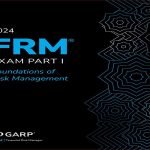- عنوان کتاب: Semantic Models in IoT and eHealth Applications
- نویسنده/انتشارات: Sanju Tiwari
- حوزه: اینترنت اشیاء, کاربرد اینترنت اشیاء
- سال انتشار: 2022
- تعداد صفحه: 292
- زبان اصلی: انگلیسی
- نوع فایل: pdf
- حجم فایل: 12.7 مگابایت
حوزه بهداشت و درمان به دلیل رشد در حال ظهور فناوریهای اینترنت اشیا (IoT) به بسیاری از دستگاههای بهداشتی مرتبط با اینترنت نیاز دارد. برای تشخیص و پیشگیری اولیه، اینترنت اشیا نقش اساسی در تجزیه و تحلیل مسائل بهداشتی و ایجاد هشدار با کمک دستگاه های اینترنت اشیا ایفا می کند. فناوریهای اینترنت اشیا نقش مهمی در ارائه راهحلهای کارآمد و مؤثر در حوزههای سیستم اطلاعات سلامت دارند. حوزه مراقبت های بهداشتی برای مردم و سازمان ها برای دریافت خدمات و ارائه خدمات به طور همزمان بسیار مهم است. در این زمینه، مجموعه عظیمی از دانش حوزه توسط دستگاههای پزشکی جمعآوری میشود که به طور موثر فعالیتهای نظارت از راه دور بیمار را به روشی پویا انجام میدهد. برای جمع آوری داده های بیمار می توان از دستگاه های مختلفی مانند نظارت بر سلامتی، مراقبت از سالمندان، بیماری های مزمن، فعالیت های تناسب اندام و اطمینان از پایداری استفاده کرد. این دستگاه ها (دستگاه های تشخیصی، تصویربرداری پزشکی و حسگر) قابل توجه بوده و به طور موثر برای تشخیص، داروسازی و درمان استفاده می شوند. انواع مختلف دستگاه های سنجش مانند فشارسنج، گلوکز متر، دماسنج و سنسور ضربان قلب می توانند بهترین نمونه از دستگاه های اینترنت اشیا در مراقبت های بهداشتی باشند. دادههای بهداشتی ذخیرهشده و تحلیلشده جمعآوریشده از دستگاهها بعداً برای پرس و جو و ایجاد هشدار با تعریف قوانین در شرایط اضطراری استفاده میشوند. این برنامه ها خدمات پزشکی مبتنی بر اینترنت اشیا را برای کاهش هزینه، نظارت بر بیماران، کاهش زمان ارائه دهندگان مراقبت های بهداشتی و افزایش راهنمایی بیمار ارائه می دهند. این دستگاههای سنجش میتوانند دادههای جمعآوریشده (اطلاعات کاربر، دادههای سنجش سلامت، تاریخچه، اطلاعات دستگاه یا سایر دادههای دامنه) را مبادله کنند. در هنگام مبادله داده ها توسط دستگاه های اینترنت اشیا، لازم است از محرمانه بودن و حفظ حریم خصوصی داده ها اطمینان حاصل شود و داده ها بدون از دست دادن معنای خود مبادله شوند. فناوری های وب معنایی مانند هستی شناسی ها و قوانین بهترین تلاش برای حفظ ثبات داده ها هستند. ثابت شده است که این فناوریها برای بهرهبرداری و ادغام دادهها از منابع مختلف، یک کار چالش برانگیز هستند. برنامه های کاربردی مبتنی بر اینترنت اشیا در فناوری های وب معنایی برای ارائه خدمات مبتنی بر حسگر و نظارت از راه دور با پیوند دادن کاربران نهایی گنجانده شده اند. نیاز به ارائه مدلسازی معنایی دادهها با توضیحات دستگاههای IoT وجود دارد. دستگاه های اینترنت اشیا هر روز داده های عظیمی را با مشاهدات و فعال سازی تولید می کنند. هر دستگاهی اطلاعات خاص خود را دارد و دسترسی به اطلاعات توسط برنامه های مختلف چالش برانگیز می شود. این مشکل را می توان با درگیر کردن معناشناسی برای کاهش ابهام و افزایش قابلیت استفاده مجدد از داده ها برای تصمیم گیری مهم حل کرد. این به عنوان یک مدل مفهومی ارائه شده است که شامل نمایش داده های معنایی با معنای آن و رابطه احتمالی بین آنها می شود. در رویکرد وب معنایی، دادهها مدلسازی و سازماندهی میشوند تا پایگاه دانش را پیش ببرند و یکپارچگی دادهها را با بهروزرسانی اطلاعات از راه دور حفظ کنند. یک موجود، کلمه یا داده واحد نمی تواند زمینه یا معنا را برای انسان تفسیر کند، اما موجودیت های مرتبط همیشه می توانند معنا را با یک زمینه ارائه دهند. به عنوان مثال، زمینه داده ها در یک پایگاه داده عمدتاً با ساختار آن بیان می شود اما بر معنای آن متمرکز نیست، در حالی که در مدل سازی معنایی، ساختار به طور ذاتی با معنی و توصیف داده ها توصیف می شود. سلسله مراتب کلاسها و زیر کلاسها میتواند مدلهای معنایی را به عنوان طبقهبندی دادهها توصیف کند، و کلاسها با ویژگیهایی برای تعمیم ساختار مرتبط هستند. این انتزاع طبقه بندی، خوانایی و تفسیر قوی را هم برای انسان و هم برای ماشین فراهم می کند، که جنبه مرکزی وب معنایی بود. هستی شناسی ها به عنوان ستون فقرات برای دستیابی به هدف وب معنایی برای تعریف صریح مفاهیم و ارائه به عنوان یک مدل معنایی ارائه می شوند. انتزاعات را می توان در یک مدل داده معنایی به عنوان ارائه کرد
• طبقه بندی – روابط “نمونه_از”.
• Aggregation – رابطه “has_a”.
• تعمیم – رابطه “is_a”.
The Healthcare domain needs many health devices linked to the internet due to the emerging growth of Internet of Things (IoT) technologies. For the initial diagnosis and prevention, the Internet of Things plays an essential role in analyzing health issues and generating alerts with the help of IoT devices. IoT technologies play a significant role in providing efficient and effective solutions in health information system areas. The Healthcare domain is crucial for people and organizations to get the services and the delivery of services simultaneously. In this area, a massive collection of domain knowledge is gathered by the medical devices that efficiently conducts the activities for remote patient monitoring in a dynamic way. Different devices can be used to collect the patient data, such as monitoring wellness, elderly care, chronic diseases, fitness activities, and assuring sustainability. These devices (diagnostic, medical imaging, and sensor devices) are significant and effectively used for diagnosing, medicating, and treatment. Different types of sensing devices such as blood pressure monitors, glucose meters, thermometers, and heart rate sensors can be the best examples of IoT devices in health care. The stored and analyzed health data gathered from devices are later used for querying and generate alerts by defining rules under emergency conditions. These applications provide IoT-based medical services for reducing the cost, monitoring the patients, reducing healthcare providers’ time, and increasing patient guidance. These sensing devices can exchange the collected data (user information, health sensing data, history, device information, or other domain data). During the interchange of data by IoT devices, it is necessary to ensure the confidentiality and privacy of the data and exchange the data without losing its meaning. Semantic web technologies such as ontologies and rules are the best effort to maintain the consistency of data. These technologies have proven to be a challenging task for the exploitation and integration of data from different sources. IoT-based applications are included in semantic web technologies for providing sensor-based services and remote monitoring by linking the end-users. There is a need to present the semantic modeling of data with IoT devices description. IoT devices generate massive data every day by observations and actuations; every device has its own information and it becomes challenging to access the information by different applications. This problem can be resolved by involving semantics to reduce the ambiguity and increase the reusability of data for a significant decision Semantic modeling generalizes the entities with their description and depicts the relationship among entities to structure the data with its meaning. It is presented as a conceptual model to include semantic data representation with its meaning and the possible relationship between them. In the semantic web approach, data is modeled and organized to advance the knowledge base and maintain data consistency as information is updated remotely. A single entity, word, or data cannot interpret the context or meaning to humans, but linked entities can always provide the meaning with a context. For example, the context of data in a database is expressed mainly by its structure but not focused on its meaning, while in semantic modeling, the structure is described inherently with the meaning and description of data. The hierarchy of classes and subclasses can describe semantic models as data classification, and classes are related to the properties to generalize the structure. This abstraction of classification provides strong readability and interpretation to both humans and machines, that was the semantic web’s central aspect. Ontologies are presented as the backbone to achieve the goal of the semantic web to define the concepts explicitly and presented as a semantic model. Abstractions can be presented in a semantic data model as
- Classification – “instance_of” relations
- Aggregation – “has_a” relation
- Generalization – “is_a” relation
این کتاب را میتوانید از لینک زیر بصورت رایگان دانلود کنید:

































نظرات کاربران